Navigating the complexities of a refugee application can be daunting, but having the right resources can make all the difference. It's essential to craft a compelling letter that clearly outlines your story, fears, and reasons for seeking asylum. This article will guide you through creating an effective letter template specifically for embassy refugee applications. So, if you're ready to learn how to present your case with confidence, keep reading!
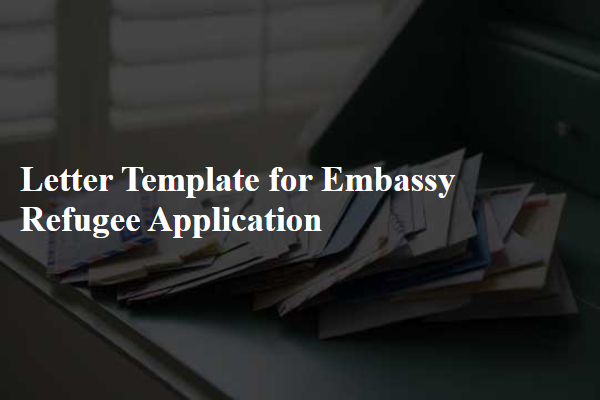
Applicant's personal information
The refugee application process often requires detailed personal information from applicants seeking asylum. Applicants must provide their full name, including any aliases, along with their date of birth, which is crucial for verifying identity. A passport or ID number must be submitted to establish legal identity, while information about national origin is essential for assessing eligibility. The applicant's current address, along with prior addresses in their home country, allows for tracking migration patterns. Additionally, contact information including phone number and email address must be accurate to facilitate communication during the application process. Providing a detailed account of any family members, including their names, ages, and relationships, is vital for understanding personal circumstances. Lastly, it is important to include any relevant details regarding persecution experienced, including dates, locations, and types of threats faced, to support the case for asylum effectively.
Clear account of persecution or conflict
A refugee applicant detailing persecution may describe experiences of systemic discrimination based on ethnicity, such as the ongoing ethnic cleansing targeting the Rohingya people in Myanmar since 2017. An applicant might recount violent incidents, like the October 2016 raid on their village, leading to loss of family members and forced displacement to overcrowded camps in Bangladesh, with over 900,000 Rohingya now residing in Cox's Bazar. Additionally, experiences of arbitrary detention without trial, torture, or threats from local authorities, such as being targeted for political dissent against oppressive regimes in Venezuela, substantiate claims of a genuine fear of returning home. Factors like instability due to civil conflict, exemplified by ongoing troubles in Syria since 2011, might also underscore the urgency of seeking asylum. Essential elements include personal accounts of trauma, human rights violations, and the psychological impact of living under constant threat of violence or persecution.
Evidence and supporting documentation
Comprehensive evidence and supporting documentation are critical in enhancing the credibility of a refugee application submitted to embassies. Essential documents can include individual identification records (such as national ID or passport), personal testimonies detailing the basis of fear or persecution, medical records evidencing trauma or abuse, and witness statements from individuals who can corroborate claims. Documentation relating to country conditions, like reports from humanitarian organizations such as Amnesty International or Human Rights Watch, may provide context regarding systemic violence or human rights abuses within the applicant's home country. Additional evidence can consist of police reports, court documents, or news articles that substantiate the risks faced by the applicant. Assuring that all documentation is translated into the official language of the submitting embassy and properly organized increases the chances of a favorable outcome.
Specific asylum laws and regulations
Asylum seekers face complex challenges navigating specific asylum laws and regulations in host countries. The 1951 Refugee Convention outlines the criteria for determining refugee status, emphasizing a well-founded fear of persecution due to race, religion, nationality, membership in a particular social group, or political opinion. Each country implements its own asylum process, with variations in application procedures and eligibility requirements. For instance, in the United States, the Immigration and Nationality Act governs asylum applications, necessitating proof of past persecution or a credible fear of future persecution. Applicants must submit their claims within one year of arrival, a timeline strict in certain jurisdictions. In contrast, European countries, bound by the Common European Asylum System, have harmonized procedures across member states, yet individual states maintain distinct requirements regarding documentation and interviews. This intricate legal landscape underscores the importance of understanding local laws and preparing thorough documentation to support asylum claims effectively.
Contact details for follow-up communication
Embassy refugee applications require meticulous attention to detail, emphasizing the importance of contact details for effective follow-up communication. Include your full name, ensuring clarity for identification purposes. Provide your primary phone number, ideally a mobile number accessible at all times, enabling quick communication regarding application status. Additionally, your email address must be current and regularly monitored, facilitating prompt updates from embassy officials. Include your residential address, specifying country and city, to allow for potential correspondence via postal mail. If applicable, mention secondary contacts, such as family members or legal representatives, ensuring they are informed about your application and can advocate on your behalf if needed. This thoroughness enhances the efficiency of the communication process throughout the refugee application journey.
Letter Template For Embassy Refugee Application Samples
Letter template of legal representation request for refugee case to embassy
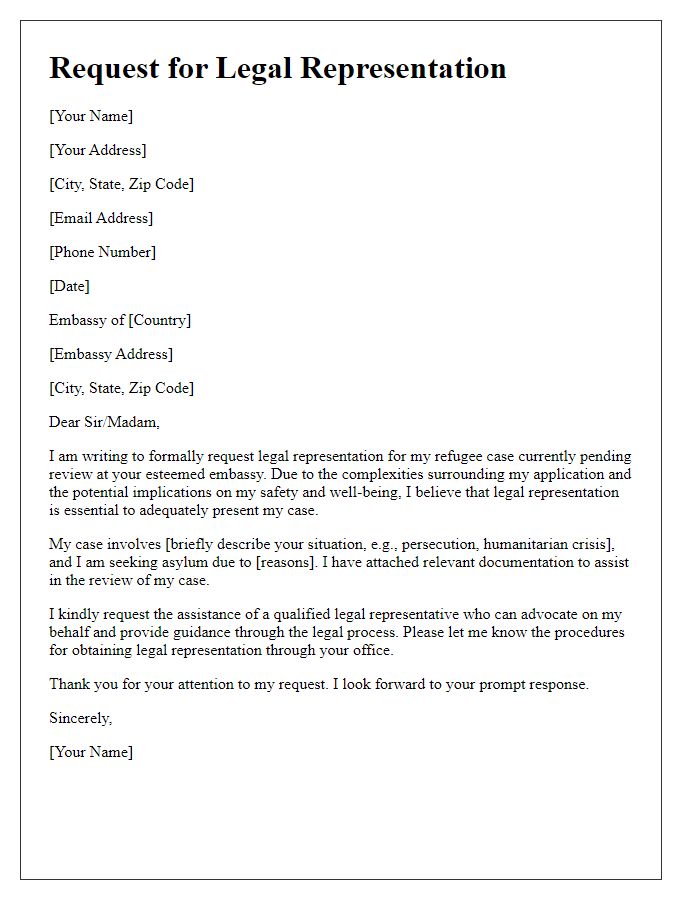

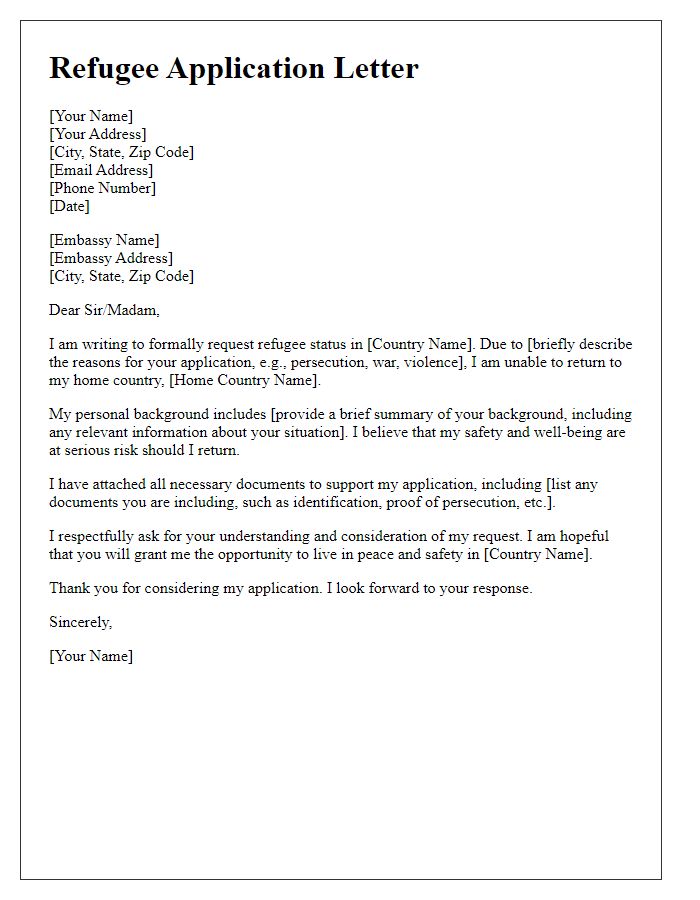
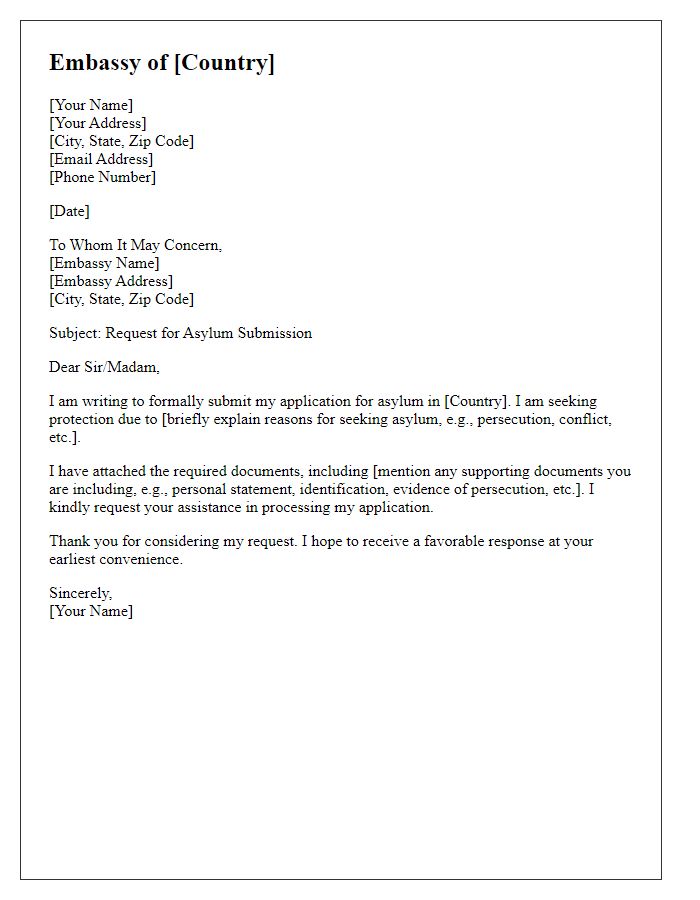
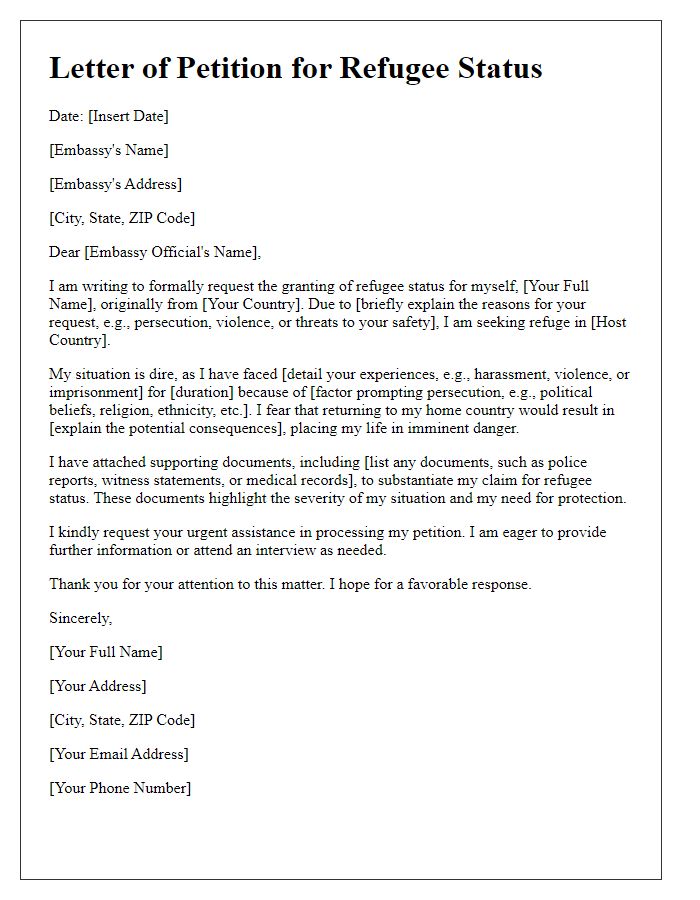
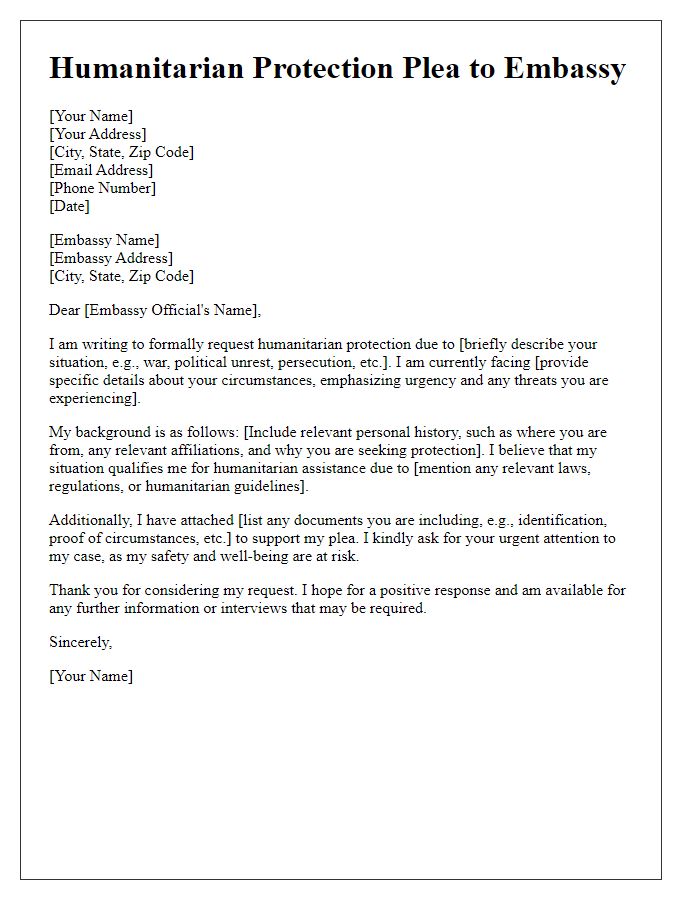
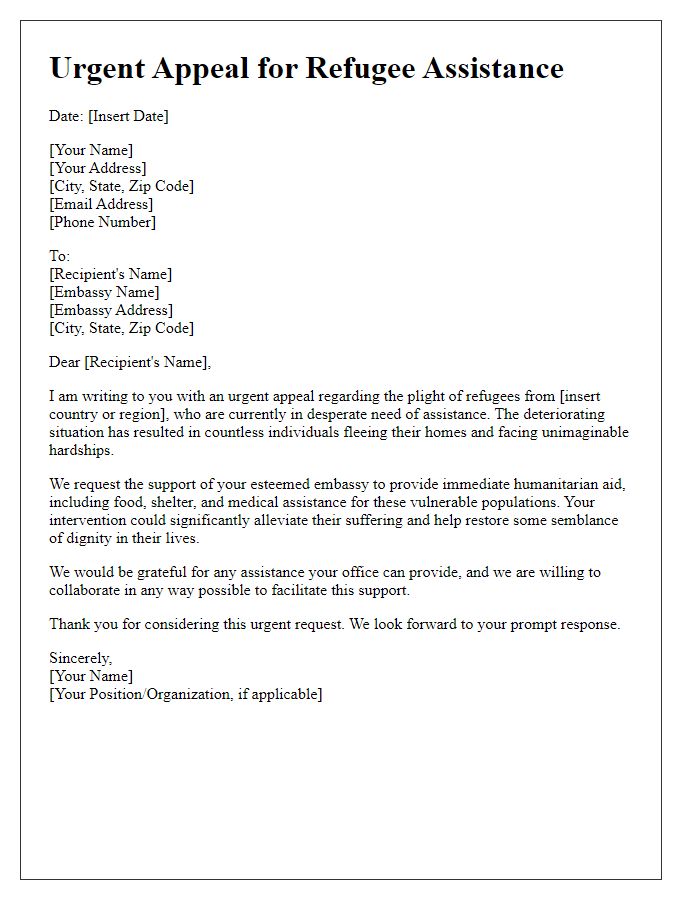
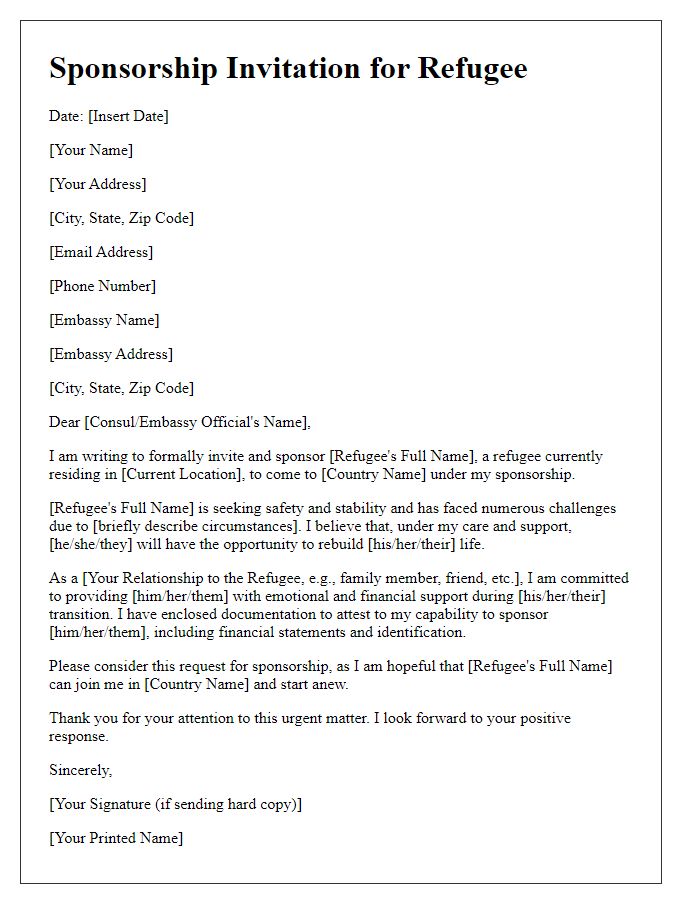
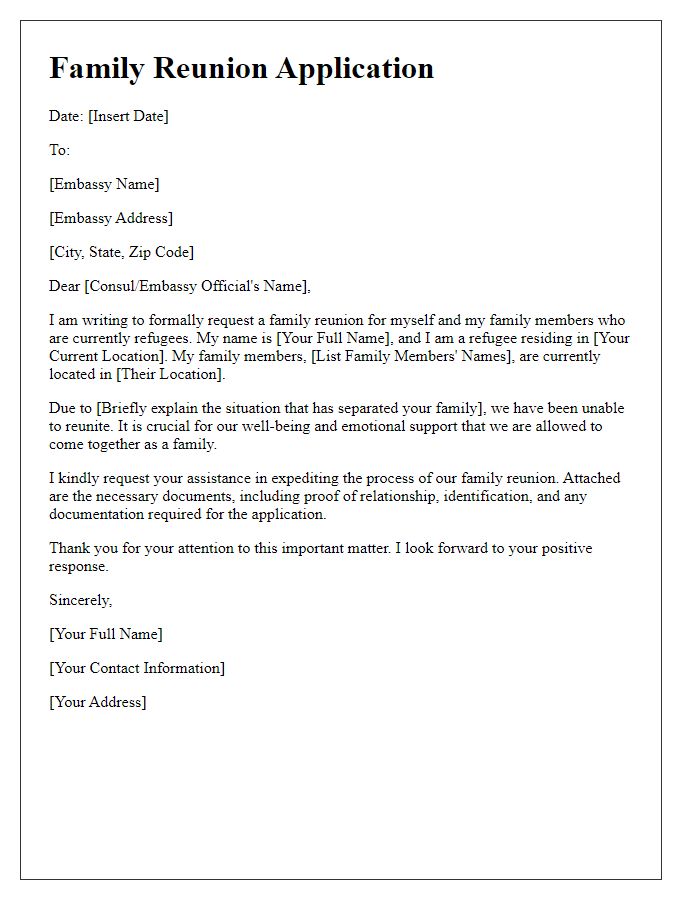
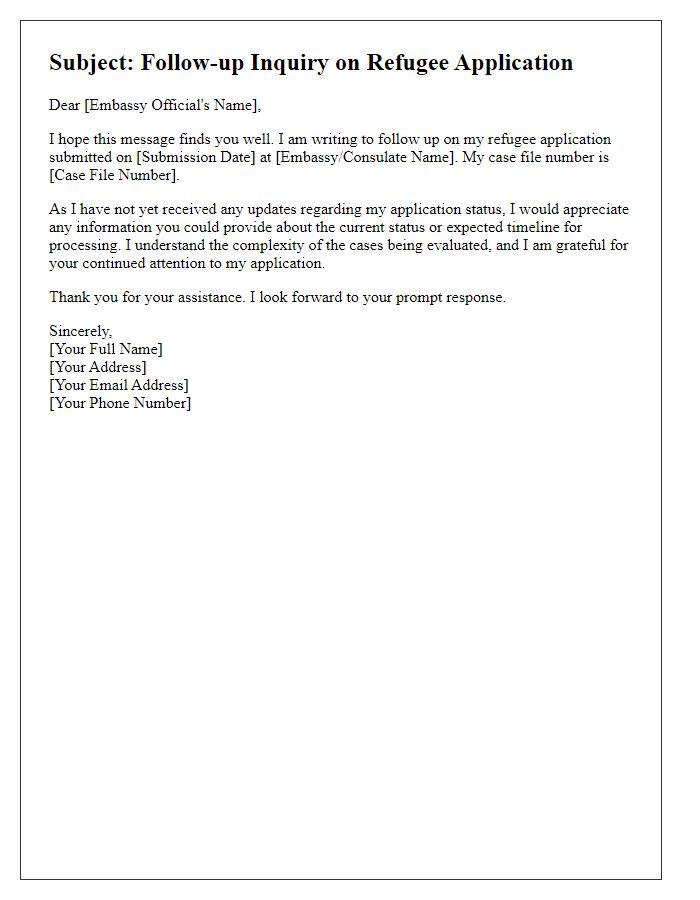
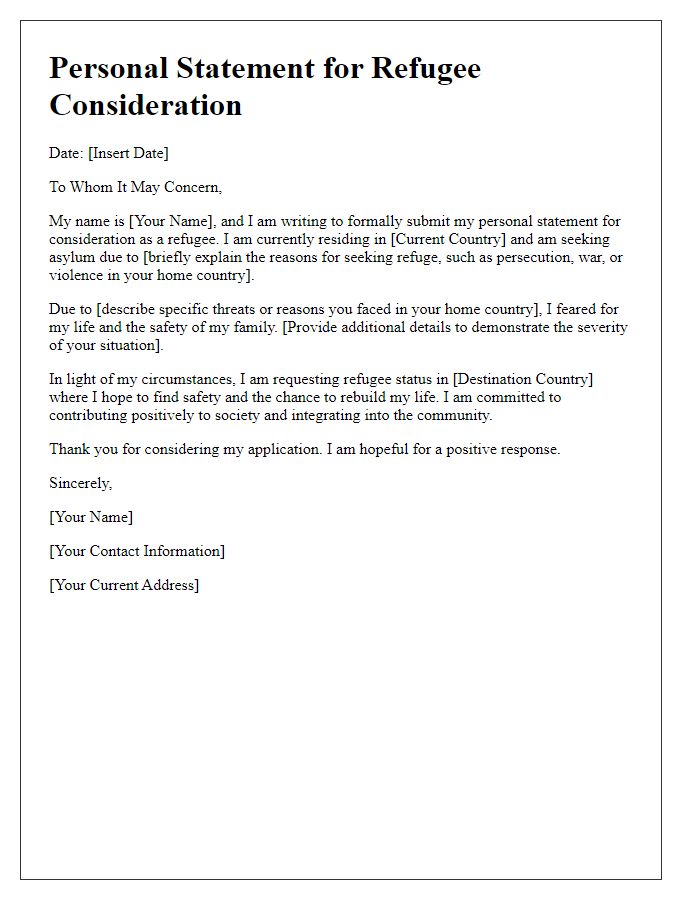

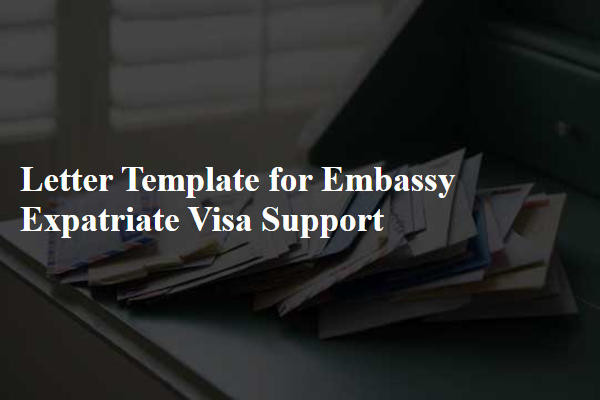
Comments